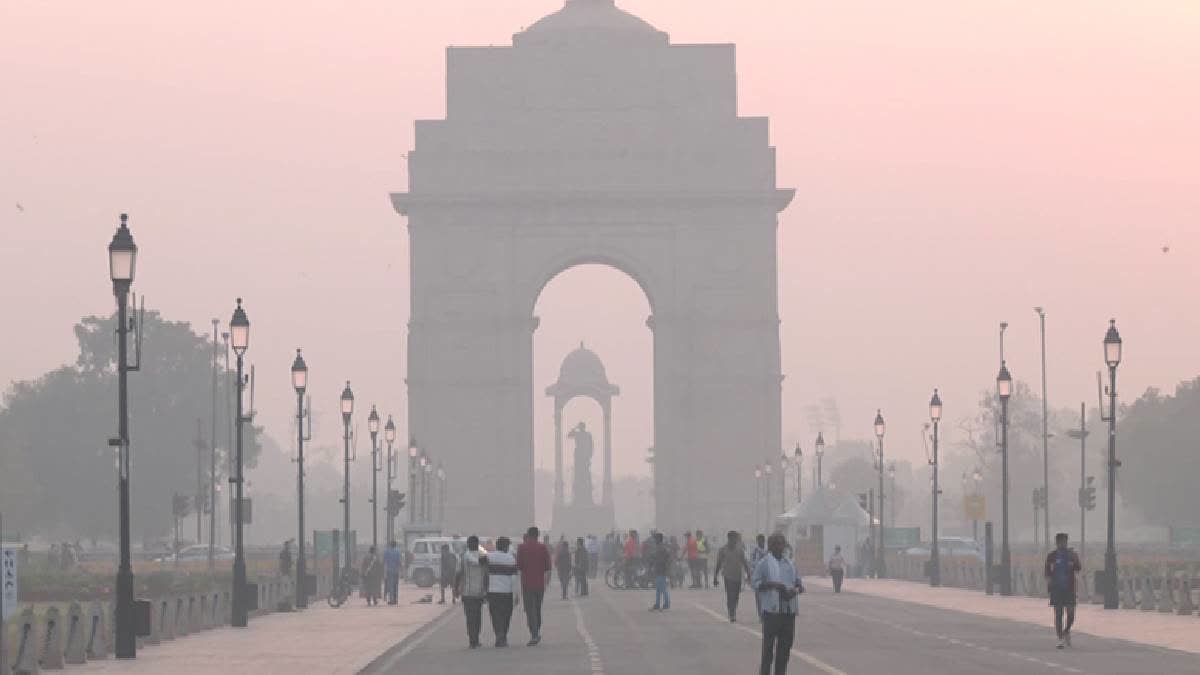New Delhi:Delhi’s air quality hovered dangerously close to the ‘severe’ category on Monday, with an Air Quality Index (AQI) reading of 373, leaving residents concerned about the health implications of prolonged exposure to the city's toxic air. Following the spike in pollution, particularly after the Diwali festivities, Delhi’s environmental situation has again taken centre stage, prompting experts to call for immediate and long-term solutions.
Speaking to ETV Bharat, environmentalist Manu Singh highlighted the unique circumstances affecting air quality this year. "The rainy season extended well into the colder months, which is unusual," Singh noted.
"The situation is diabolical, to say the least, but it’s not as dire as it has been in previous years. Just a couple of years ago, AQI levels around Diwali were unmeasurable, soaring beyond 999. So, in terms of measurable improvement, there is some relief.” Singh added that while air quality has not deteriorated as severely as in the past, the situation remains a significant cause for concern.
Singh explained that the onset of winter brings nearly stagnant air, which exacerbates pollution levels. “When the air movement is negligible, particles from construction sites, along with combustion pollutants, remain suspended in the atmosphere,” Singh said. He pointed out that many world capitals are situated near large water bodies that help disperse pollutants, but this natural dispersal mechanism doesn’t function well in Delhi’s current conditions.
Adding to the challenges, Diwali festivities have further strained air quality. The cultural practice of lighting firecrackers, despite a government ban, contributes significantly to increased levels of PM10 and PM2.5 pollutants. Singh also pointed to the widespread burning of agricultural stubble in neighbouring states like Punjab and Haryana, which intensifies pollution across the region.
Singh outlined several critical steps needed to improve Delhi’s air quality in the long run. “Firstly, we need to reduce the population density in highly polluted areas and curb large-scale rural migration to urban centers,” he stressed, emphasizing the adoption of sustainable technologies and green practices. Singh called for a shift from conventional to electric vehicles and suggested a ban on construction activities that generate pollution during peak pollution months.
Stuble burning a major worry
Stubble burning, a major contributor to the pollution problem, also requires alternative solutions, according to Singh. He urged farmers to adopt available technologies to manage crop residues without burning. “I appeal to the government to implement stricter measures to discourage stubble burning and make alternative practices affordable and accessible for farmers,” he added.
The environmentalist warned against the use of firecrackers, which release toxic substances such as magnesium, sodium, and zinc, known to contribute to cardiovascular issues and other health risks. “This is not just a matter of human health but of protecting other species as well. Despite the ban, people continue to burn firecrackers. The government must take a more radical stance on this and intensify enforcement,” Singh said.
How much bad air is in the national capital?
The data on Delhi’s deteriorating air quality aggravates these concerns. The 24-hour AQI readings reported from localities like Anand Vihar, Ashok Vihar, Jahangirpuri, Mundka, NSIT Dwarka, Nehru Nagar, Punjabi Bagh, Rohini, Wazirpur and Vivek Vihar fell into the ‘severe’ category, reflecting the widespread impact of the pollution spike.
According to the Central Pollution Control Board (CPCB), on Monday at 7 am, AQI was recorded above 300 in many areas of the national capital.
Other areas in India, including Bahadurgarh (314 AQI) and Bharatpur (317 AQI), Ghaziabad 306, Noida 302, Rajasthan’s Hanumangarh 332 and Sri Ganganagar being the highest 375, experienced ‘very poor’ levels, though still less alarming than the capital’s situation.
